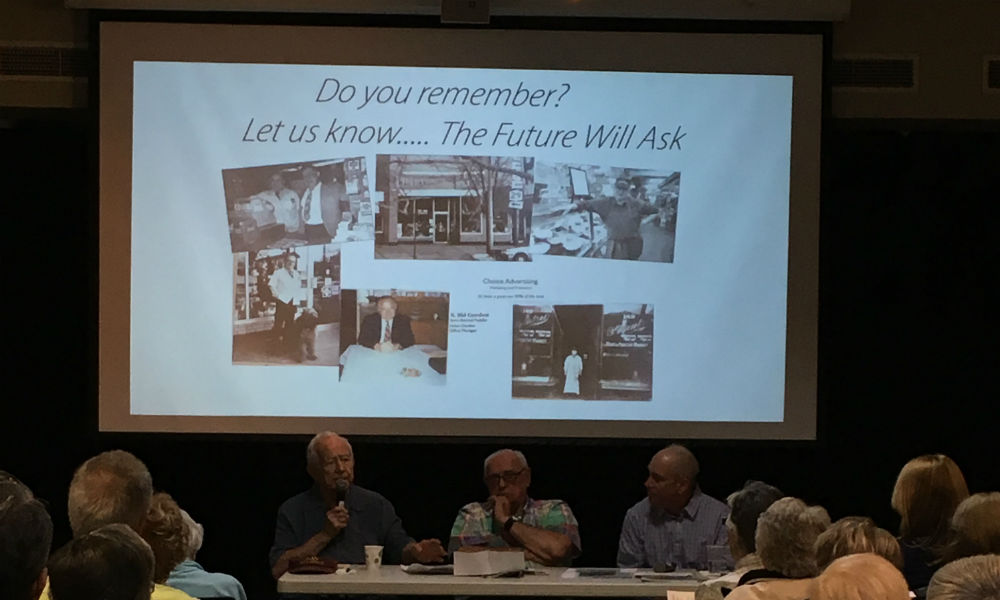When Saratoga Springs native Sidney Gordon was 11, he broke out of his yeshiva (an Orthodox Jewish seminary). He’d agreed to go to the Brooklyn school in the first place, because it was important to his mother, but after a year of training to be a rabbi, he decided it wasn’t for him. One Friday afternoon, he told the rabbi in charge of the school that he was going to visit his aunt in Coney Island for the weekend. Instead, he ordered a Nathan’s hotdog and Pepsi and hopped on a boat headed for Albany. Once there, he hitched a ride to Saratoga, where he climbed over his parent’s fence and slept on the back porch, because all the rooms of their bed-and-breakfast had been rented out. “But I liked the back porch,” said Gordon.
Lo and behold, Gordon never went back to the yeshiva or became a rabbi. Instead, he became a lifelong resident of Saratoga, sharing his story, around 70 years later, at a brown-bag lunch at the Saratoga Springs Public Library on Thursday, April 10. The event is part of an ongoing lecture series put on by the library and the Saratoga Springs Heritage Area Visitor Center, and featured a panel discussion entitled, “The Jewish Experience: Post World War II.” The panel was presented by Susan Edwards, who’s been working with The Saratoga Room to transcribe taped oral histories, which document the experiences of some 70 Jewish families in the pre- and postwar era.
The interviews Edwards is transcribing were conducted by Saratogian Sophie Goldstein in the early 1960s. Born in Russia in 1909, Goldstein moved to the US with her family when she was three, and Saratoga when she was 30. After the death of her husband in 1956, she decided to get a master’s degree in library science. She chose to write her thesis on Jewish history in Saratoga Springs, only to find that no records on the subject existed. She took it upon herself, with the help of Florence Susman, the director of the Saratoga Springs Public Library, to create a comprehensive collection of Jewish histories in Saratoga. Until now, the Goldstein Collection has been housed in The Saratoga Room, but as of Thursday, it’s now available on the library’s website, including four, two-part audio recordings from the collection.

“I don’t think I realized how important and active a role the Jewish community played in Saratoga,” Edwards said. “All these physicians, all these professionals…I think that though Jews originally came here as peddlers, they wanted to do more, and they did. They did go to college, they did become doctors and lawyers and accountants. They didn’t want to have that image of being just a peddler.” This was the main difference Edwards and the three panelists—Gordon, Stuart Mintzer and Alan Polascek, whose parents were among the generation Goldstein based her interviews on—gave between the Jewish experience before and after World War II. While before the war, Jews focused their lives on the synagogue and the community, after it, they—especially the younger generation—attempted to assimilate into American society. Jewish businesses began to display Christmas trees and poinsettias in their shop windows over the holidays, and young men became uncomfortable with the fact that synagogues excluded women. “I can remember leaving the high school and walking with all my Catholic friends down to Broadway,” Polascek said. “We would go into the Jewish Community Center and they’d go across the street into Saint Peter’s. Afterwards, we all went across the street and all had some kind of nickel candy.”
The panelists also remembered a widespread acceptance of all religions following World War II. “When I used to walk down Broadway in the ’60s, every other store was owned by a Jewish merchant,” said Mintzen. “That, combined with the fact that my Uncle Joe, the first pediatrician in Saratoga, [delivered] not just the Jewish people of my age, but all of my friends and peers, meaning there was a lot of interaction and contact between Jews and non-Jews. I think the overt assimilation just kind of happened because everybody knew everybody. I was very friendly with blacks and whites, Jews and non-Jews: We all coexisted very well together. I never really experienced any overt discrimination for being Jewish.”
The memories shared by the panelists are exactly what Goldstein, Susman, Edwards and The Saratoga Room have sought to preserve. Given the fact that Saratoga was practically built from the ground up by the Jewish community, it’s only right that its history is remembered as doing so.


